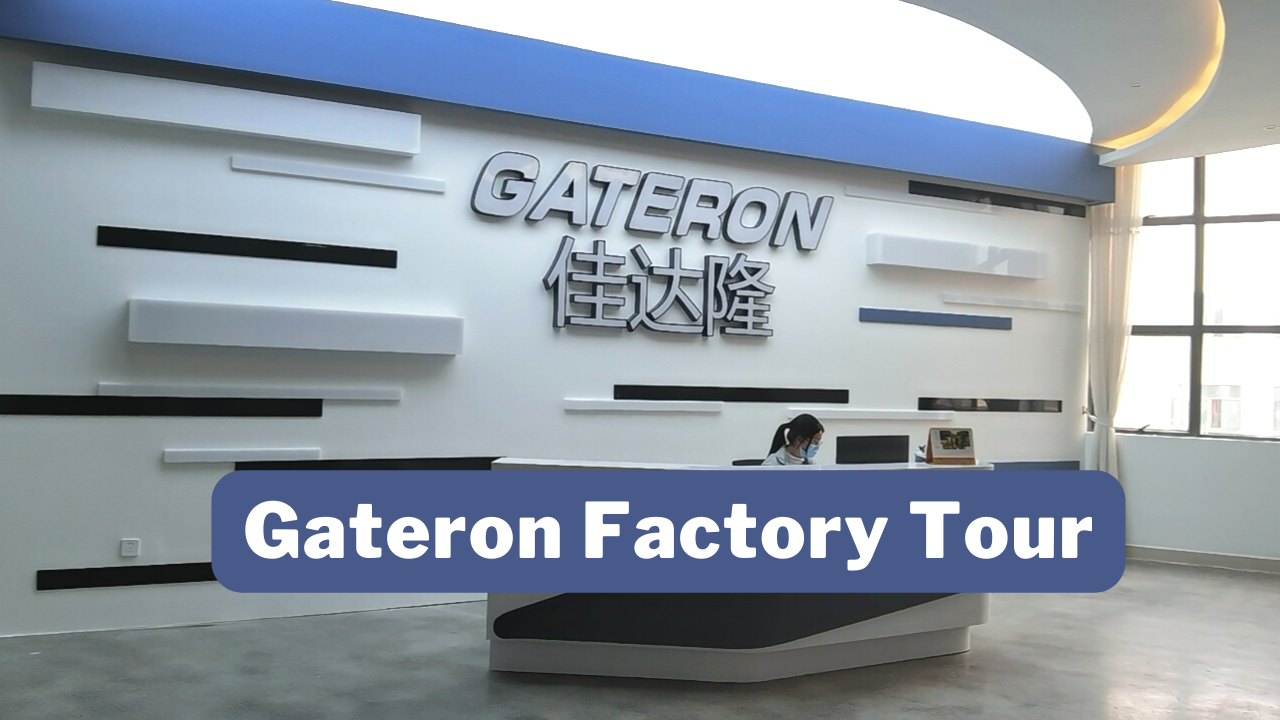As mechanical keyboard enthusiasts, we've always been fascinated by the intricacies of mechanical keyboard switches. So, when we heard that we had the opportunity to visit the headquarters of Gateron in China, we couldn't pass up the chance.
Check out the video below:
After about 15 hours long flight, we arrived in Huizhou, a city in the Guangdong province of China, where the Gateron factory is located.
The first part of the tour was a presentation of the company and its history. Gateron has been around for about 20 years and has since become one of the leading manufacturers of mechanical keyboard switches in the world. Their switches are known for their smoothness and consistency, making them a favorite among enthusiasts and gamers alike. Gateron's breakthrough is its automated process where they use machines to not only lube the switches but also assemble the parts of the switches automatically.
After the presentation, we entered their factory room. The process of making a switch starts with making a mold. Injection mold is the main process by which a switch's top housing, bottom housing, and stem are created by injecting molten plastic and high pressure into cavities. The injection mold is an extremely important process to make switches because the tolerance and accuracy of the mold are what make high-quality switches.
Making a high-quality mode starts with creating an electrode using computer numerical control (CNC) machining for sinker electrical discharge machining (EDM). What that means is to create copper pieces and cut them into shapes that will be used to imprint onto the mode through the process of EDM. In the video above, we talked more about the process in details.

Figure 1: Gateron injection molds

Figure 2: Gateron CNC machining

Figure 3: Output of CNC machine

Figure 4: Gateron EDM

Figure 5: Gateron Stem
Next, we went to see the stamping machines that make the switch metal leaf. On the input side, they have a very thin reel of copper metal which is stamped out to create the metal leaf. Then, they roll them into a giant spool like a cassette tape. The leaves will eventually be fed into another machine that separates them and slides them into the switch under the housing automatically.

Figure 6: Gateron Stamping Machine

Figure 7: Gateron Leaf Tape
Next, we saw how the switch components are assembled in the automation room. These machines not only lube the bottom housing and the side of the stem but also place each individual component including the stem, spring, and leaf into the switch housing automatically.
Once the machines assemble the parts, they perform a rigorous testing process to ensure that the switches meet Gateron's strict quality control standards. This includes testing for actuation force, actuation point, durability, etc.. Any switches that don't meet these standards are discarded.

Figure 8: Gateron Automation Machine

Figure 9: Gateron Automation Workshop
Overall, our trip to the Gateron factory was an unforgettable experience. We learned a lot about the manufacturing process behind mechanical keyboard switches and gained a deeper appreciation for the skill and dedication that goes into making them. We hope that next time when you press a button on a switch, and you hear the sweet sweet sound, remember that it took a lot of work to get there.
Other Reading
Long Pole, Long Spring | GateronBaby Raccoon Linear Switch Review
Gateron North Pole 2.0 Yellow vs Gateron North Pole Yellow
Gateron GoPolar Azure Dragon V2 vs Gateron Baby Kangaroo |
Durock Silent Switches Review | Dolphin, Shrimp, Daybreak Silent Switches
Gateron North Pole Linear Switch (Yellow and Red) Review
Video Sound Test: Expensive vs Cheap switches on QK65 R2 - Worth it?


Share:
Long Pole, Long Spring | Gateron Baby Raccoon Linear Switch Review
Lume Insider Program